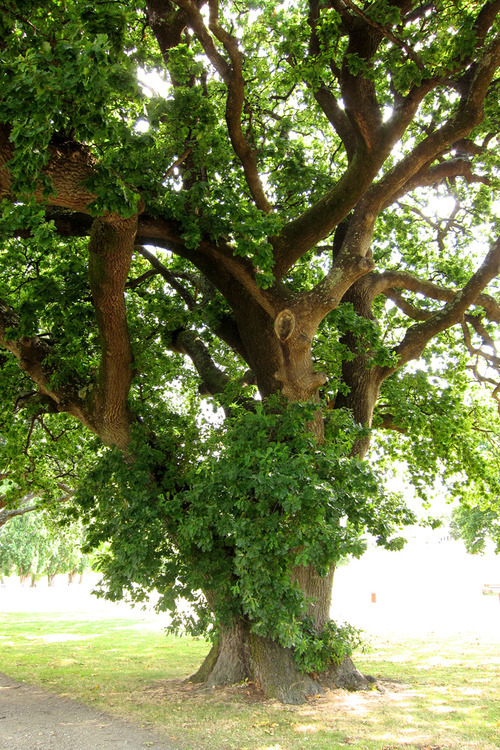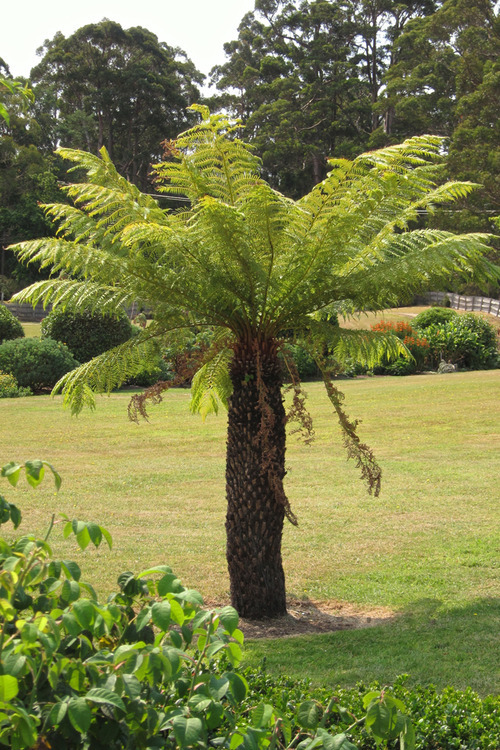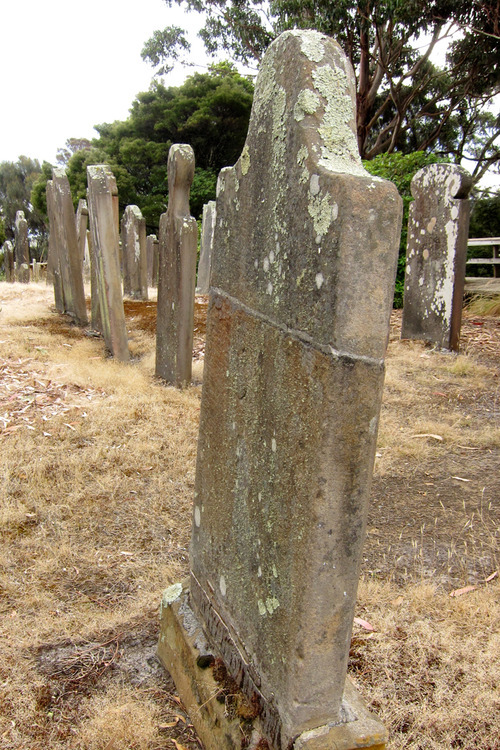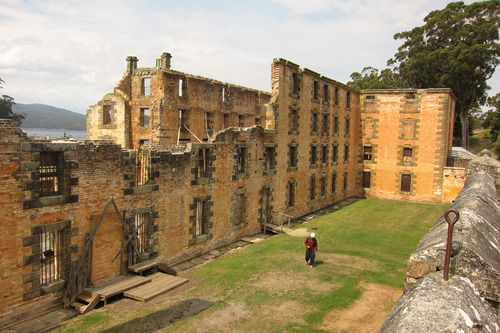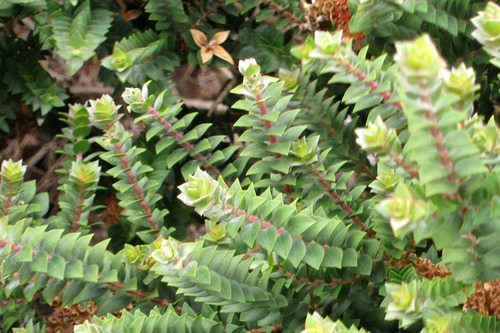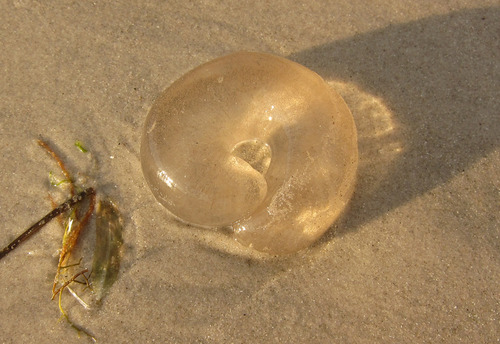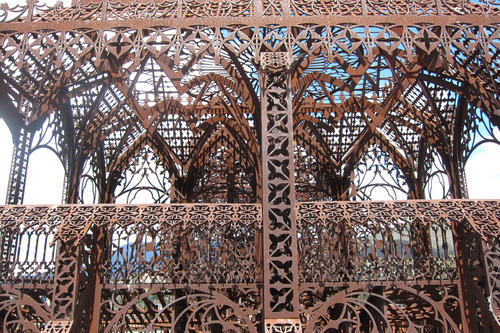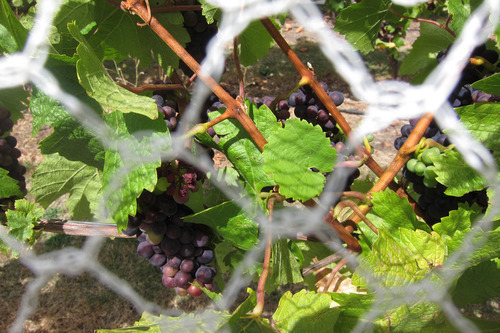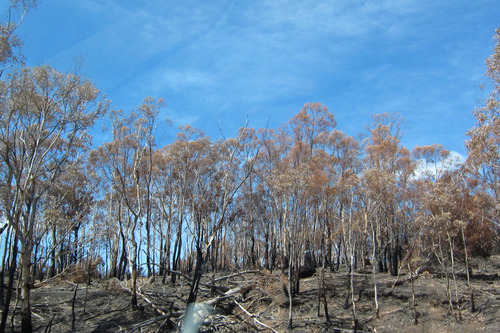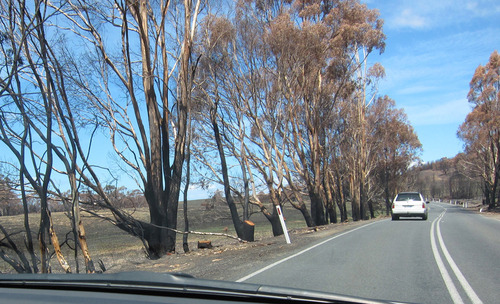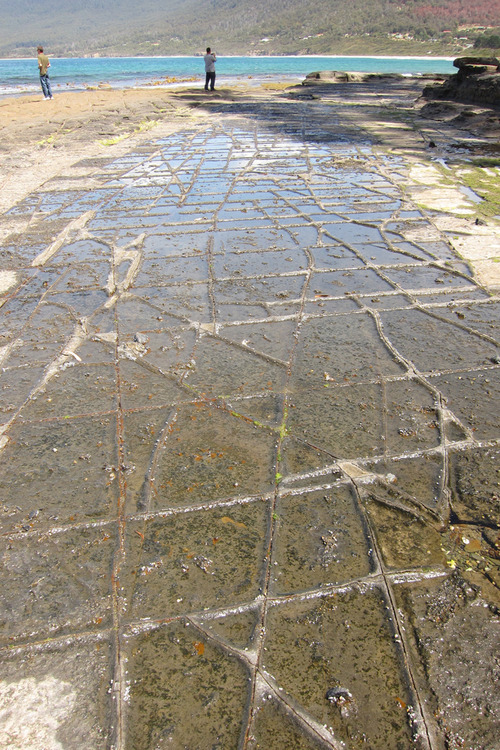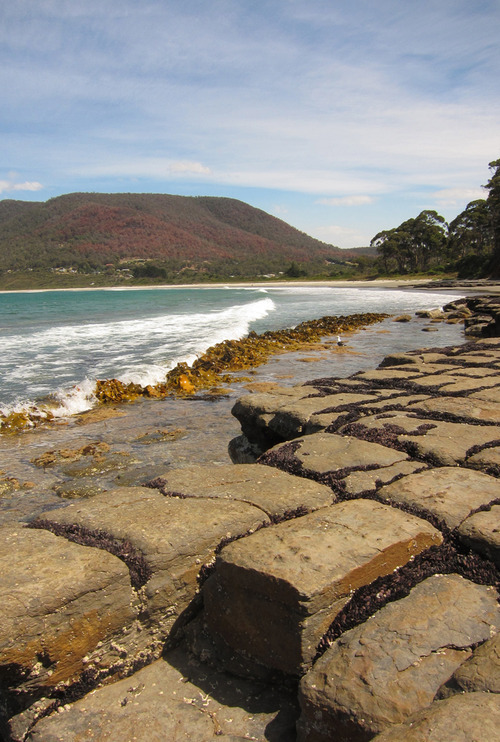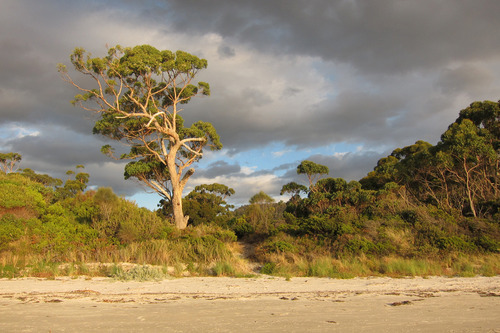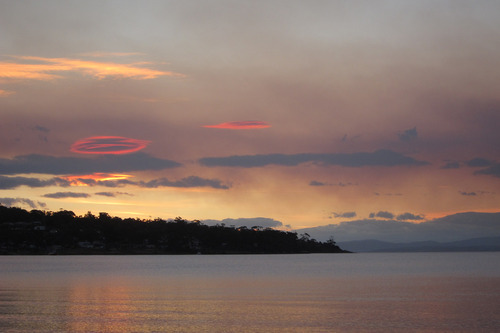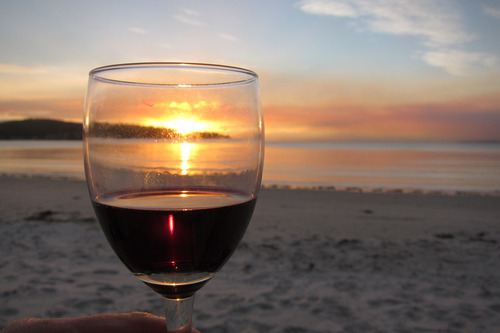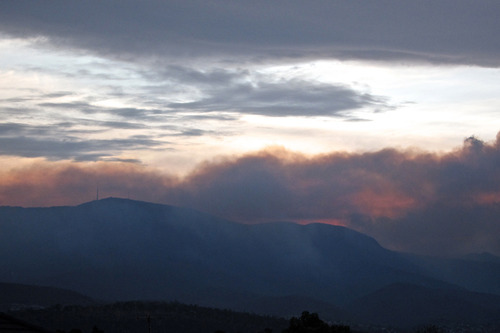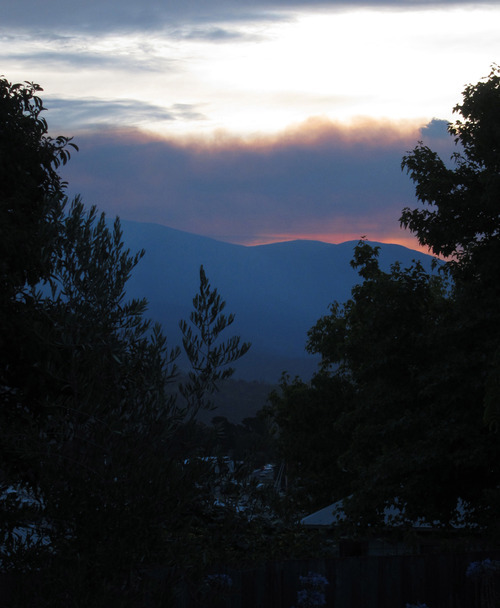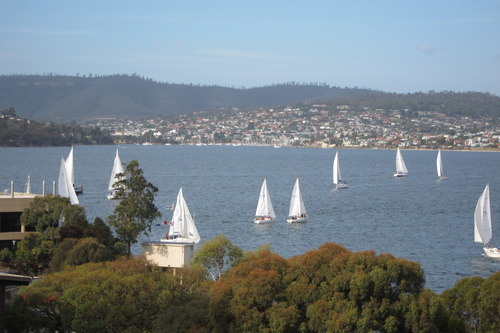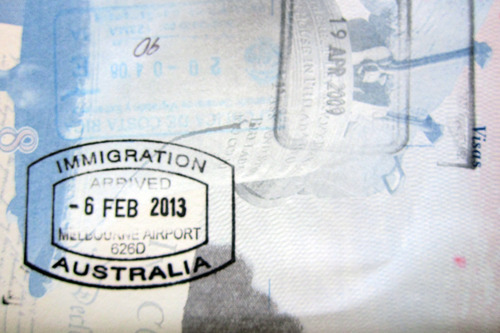Bios of my comrades - again, or still, photos to follow
A few details still vague and uncheckable at the moment. Will correct on edit.
It might be worth mentioning a few words about my fellows on this Koala Conservation Earthwatch expedition, because for the first time in 5 days, one of them proved irksome today.
Desley Whisson, 47 year old project PI, is an excellent teacher, intrepid outdoorswoman, consummate ecologist, and generally cool person. While I wouldn’t call her laid back, she exhibits flexibility about the things that don’t require dogmatism, and trusts her volunteers to do what is asked of them, and to ask questions if we don’t understand something. She speaks her mind, but is appropriate as the team leader. I find her to be an extremely easy person with whom to work, and generally fun to be around.
Vicki Nathan was a team member last year, and works as an Earthwatch administrator in the Melbourne (I think) office. She came along this year as van driver and Des’s field assistant. She nice, competent, appropriate, and somewhere in her mid to late 40’s, give or take.
Jo (last name unknown to me) lives in Perth, and had so much fun on Des’s team last year, she convinced her husband to vacation here in Bimby Park so she could do field studies all day. She’s another sort-of official person, though she doesn’t live in the cottages with the rest of us.
Tim is 30, from Melbourne, has a shaved head because he saw himself in the mirror a year ago and decided to finish what nature had started, and is currently pursuing his PhD in ecology. This is his second Earthwatch expedition, and he is a wonderful addition both as a field biologist and a social force. He is chatty, funny, charming, and nice to everybody. He has great dimples (and I think he knows it).
John, we were all shocked to learn this evening, is 74, and a world traveler and life-long outdoorsman. He’s from Chicago currently, by way of Bucks County Pa and Cambridge, MA (MIT, for those who care). He’s an emeritus professor of biochemistry (I forget which Uni, but it’s not U Chicago or Northwestern) and quite knowledgeable about all branches of science. He’s indefatigable, generous with his time, a good conversationalist, and willing to learn.
Krystal is a 32-year-old under-employed supermarket manager from Detroit who is spending her minimal vacation time and even more minimal discretionary income to slog through tick-infested fields and leech-infested forests to contribute to a study of koala ecology. She looks like someone who would be equally at home (and noticed, favorably) in a gym or a nightclub. She is easy going, easy to live with, funny, and a hard worker. Apparently, she has lousy taste in men, and this trip proved to come at an auspicious time as she just broke up with a long-term boyfriend. Unlike me, the lack of cell phone service has been a boon to her.
Kelly, the old enough to have teenage children teacher from NY, is also a sweetheart. She is always quick to help anyone with anything, volunteers to take on new challenges at every turn, and steps into the Mom role even faster than I do. She’s assumed dinner duty 3 of the last 5 nights. She’s a great cook under challenging conditions (and 10 people to feed), but I sense that she does it because no one else is stepping up. Vicki and I fill in, but I think tomorrow night will be the boys’ turn.
Robert, a 67-year-old Aussie from outside of Melbourne, is a veteran of 23 Earthwatch expeditions to all corners of the world. He is a professor of accounting, a whizz with a spreadsheet, and a writer of very entertaining doggerel. Each evening he encapsulates the day with a series of limericks, all of them G-rated, that make creative use of rhymes in the Aussie vernacular. He knows a lot about a lot of things, is extremely didactic in his sharing of that knowledge, and as I learned today the hard way, not keen on taking direction. His unwillingness to heed my advice about tracking Frank, led to his blundering blithely into the same bracken quagmire that impeded us yesterday, and our losing contact with him for about 45 minutes. He headed off on his own, without radio or GPS, and didn’t respond when I called to him in a voice that was apparently audible to the entire rest of the research team, scattered as they were over the 7.5 hectare research site. The result was that 4 of us, fearing for his safety, lost 45 minutes of research time while we tried to locate him. He eventually emerged from the undergrowth, triumphant that he had located Frank. However, since none of us was there to record the necessary data or mark the location with GPS, I had to return to the site with him after lunch. Again, he refused to try the route I knew would be far less difficult, and as a result, the relocation took 35 minutes instead of ten. When we had completed the requisite observations, I forced the issue and took the lead, forging a path that led us out of the dense forest and back to our colleagues with far less loss of skin and ankle-twisting potential than retracing our original steps would have entailed. I like the guy, but I hope not to have to work with him again any time soon.
The last two people with whom I’ve had real interaction are Kara and Jessie. Kara is a post-doc (moved from Kansas to Oz. Fancy that!), and Jessie, an Aussie about to become a grad student, and the two of them have undertaken an enormously ambitious project having to do with assessing the nutritional content of the leaves, and distribution of all of the 200+ species of trees in the Eucalyptus genus, all over Australia, that are know to provide food for koalas. Robert and I spent 3 hours with them this afternoon running transects through stands of two of the species, measuring trees, tagging them with numbers and flagging tape, taking GPS coordinates, trudging up and down slopes, perching precariously on rotting logs, avoiding leeches, and generally getting dirtier and sweatier than I have been in a long time. Kara is a force of nature – driven, tireless, organized, clear, appreciative, and fun. While I was ecstatic to get back to base and have a beer and a shower, it felt good to have learned about a new project, feel like I had contributed (saved a lot of time, according to Jessie), and spent time with two young women who are still enthusiastic about their chosen career paths. I also saw some little purple orchids, and some birds (fantails (spp) I hadn’t seen before. We also heard a lyre bird (how cool is that!?!), measured blue gums (spp) that were as tall as some Sequoias, and learned that in Australia, a mountain ash is not a Fraxinus, but yet another kind of Eucalyptus (spp).
Tomorrow is a day off. Huzzah!
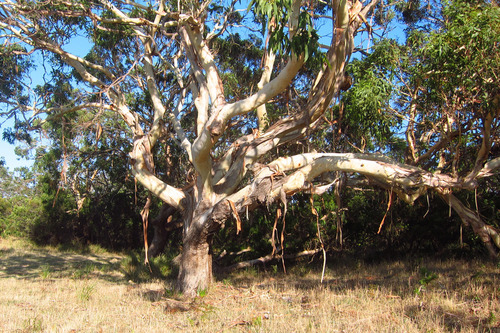
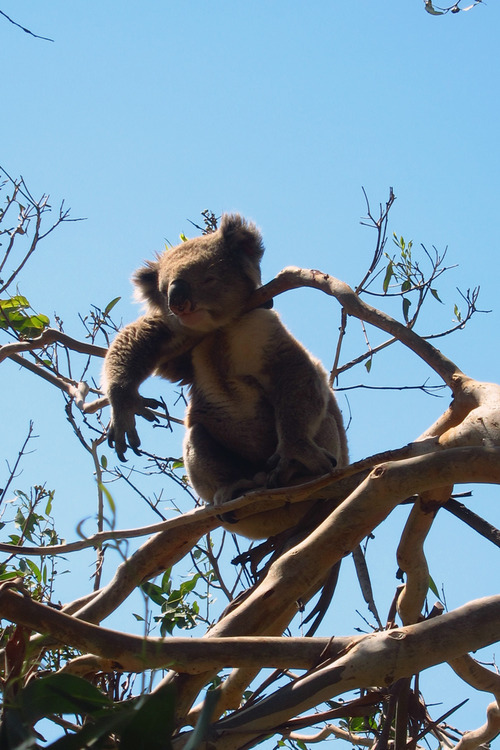
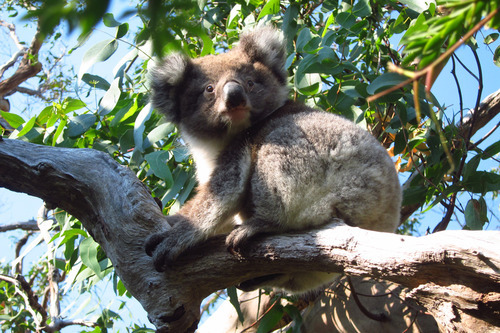
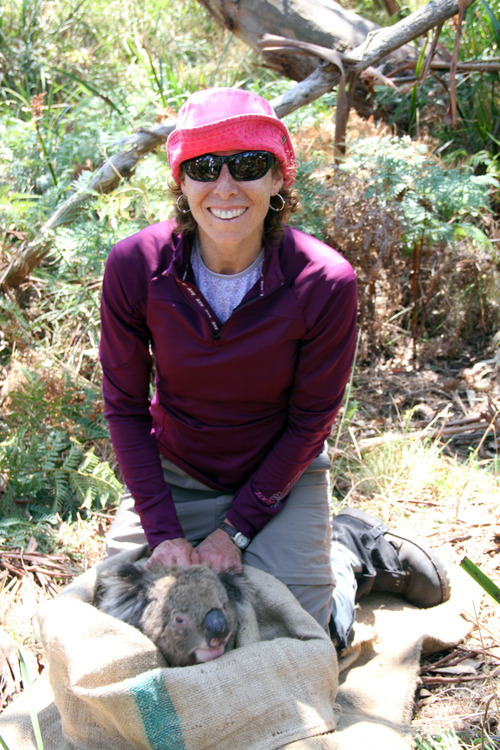
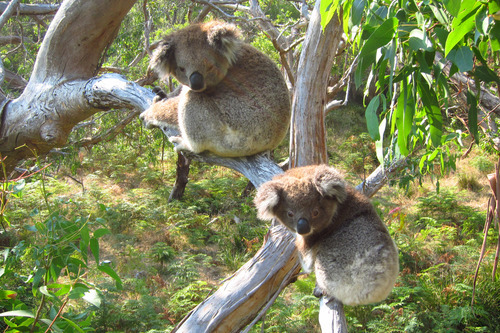
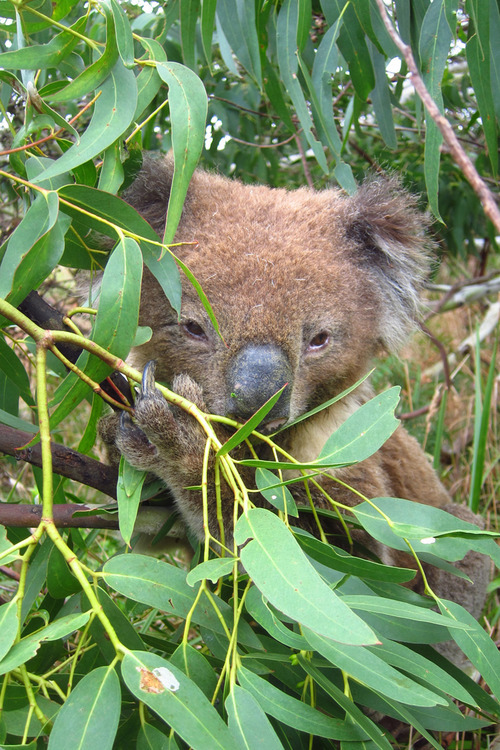
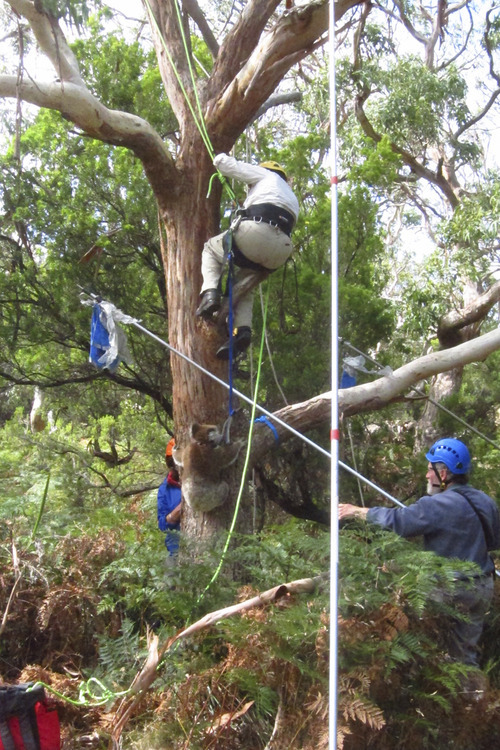
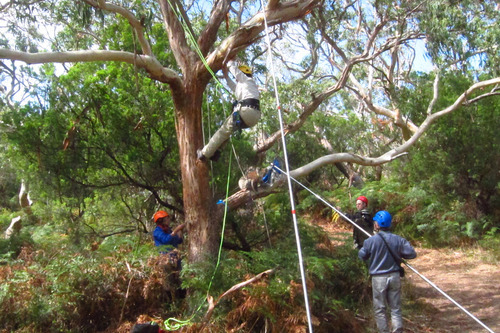


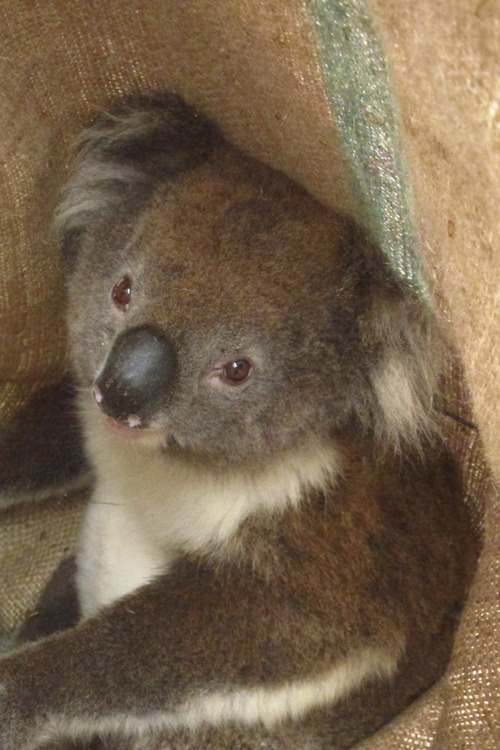
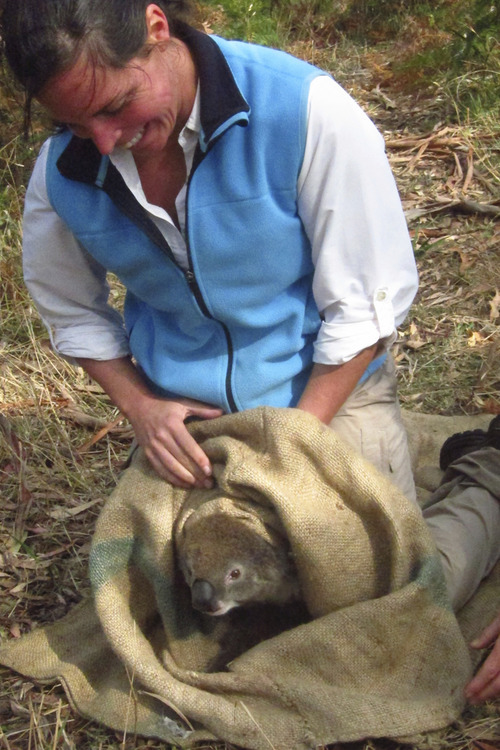
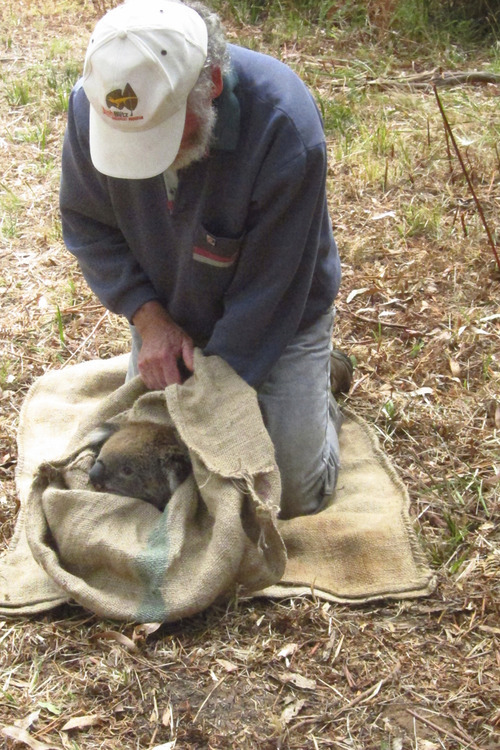
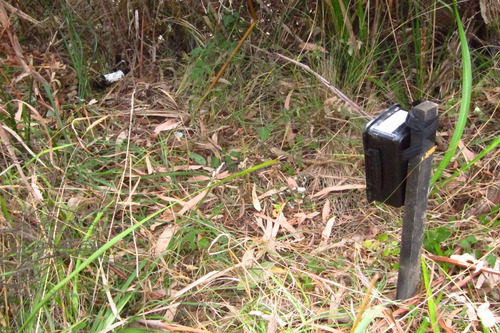
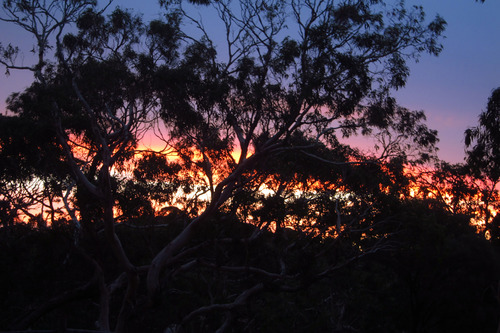
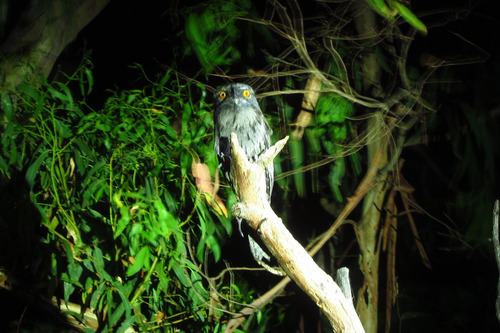
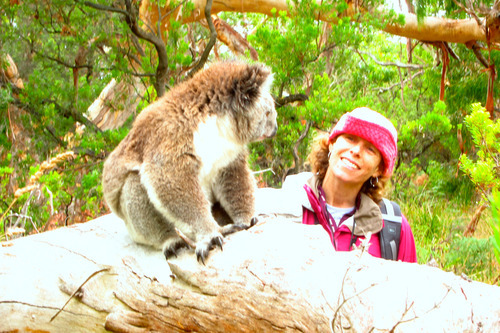
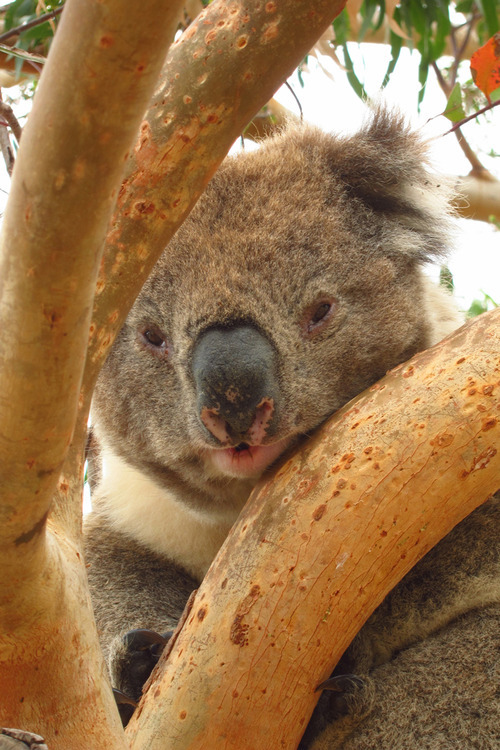
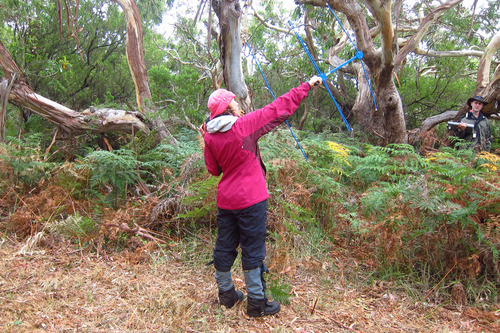
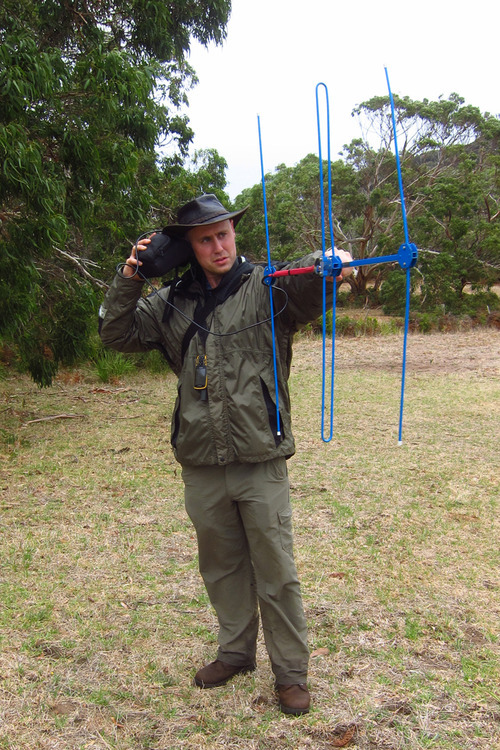
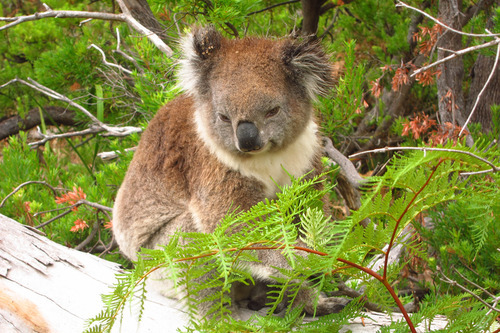
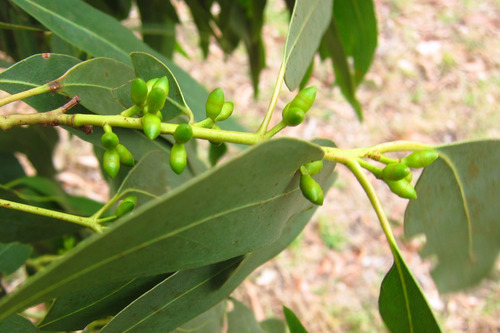
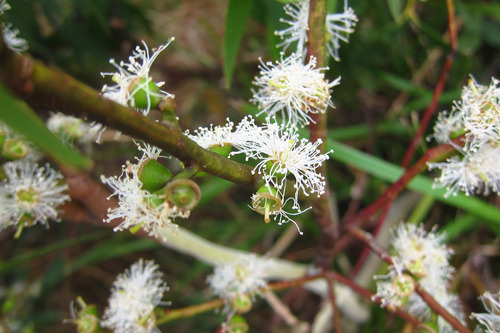
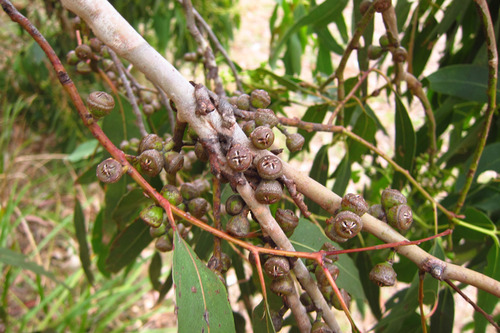
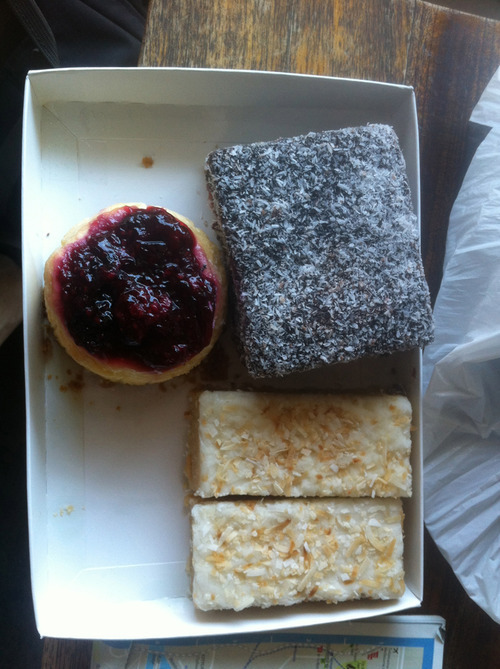
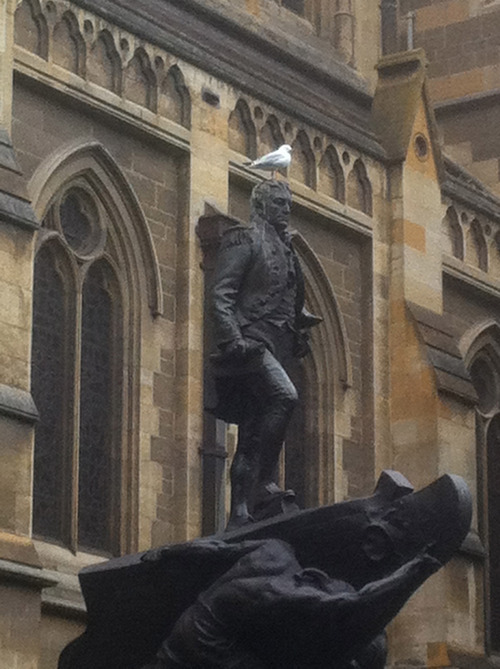
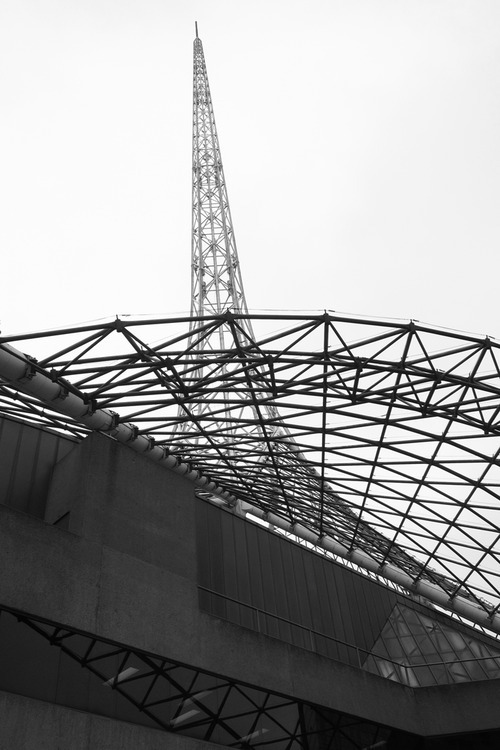
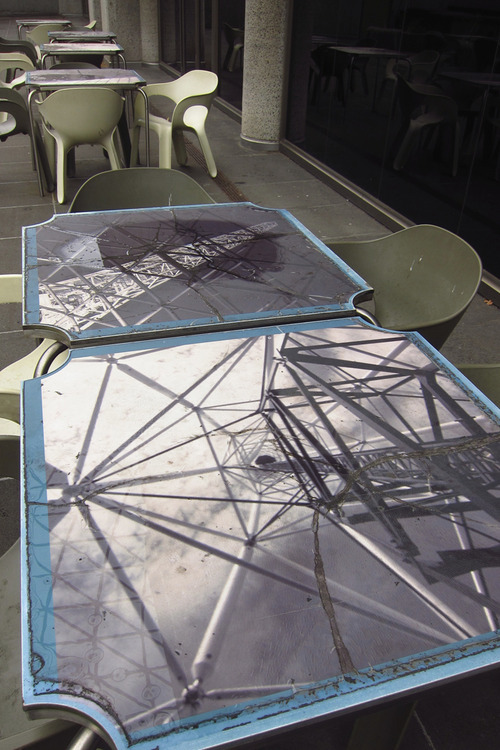
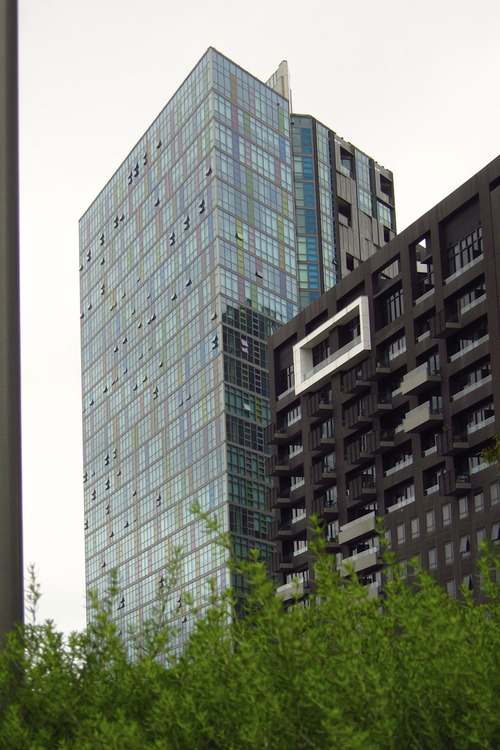
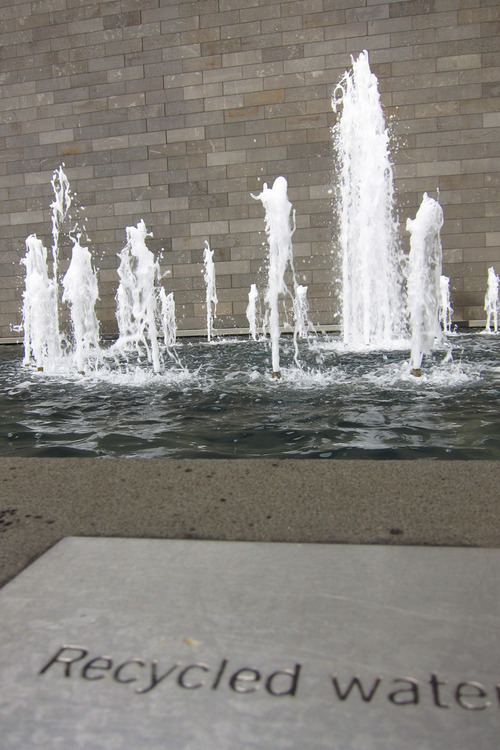
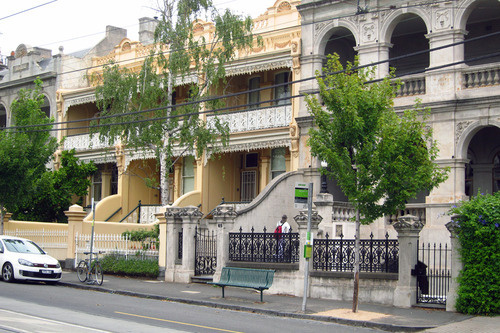
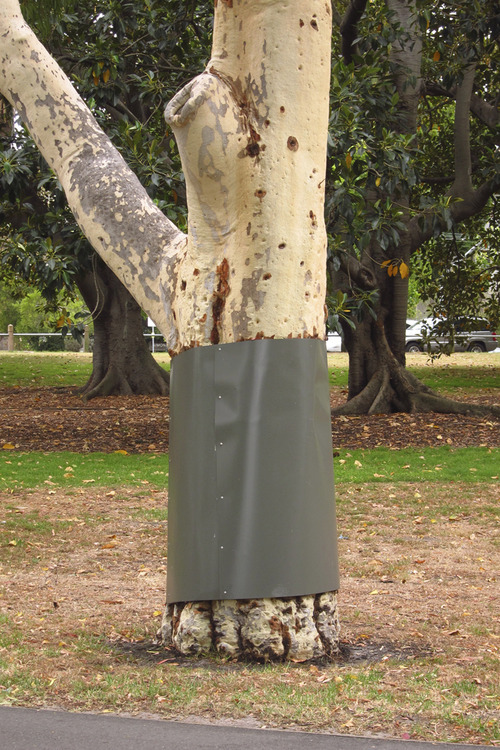
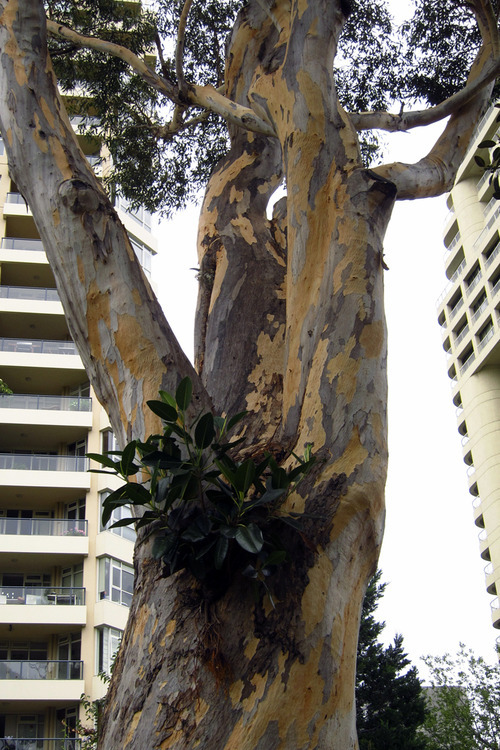
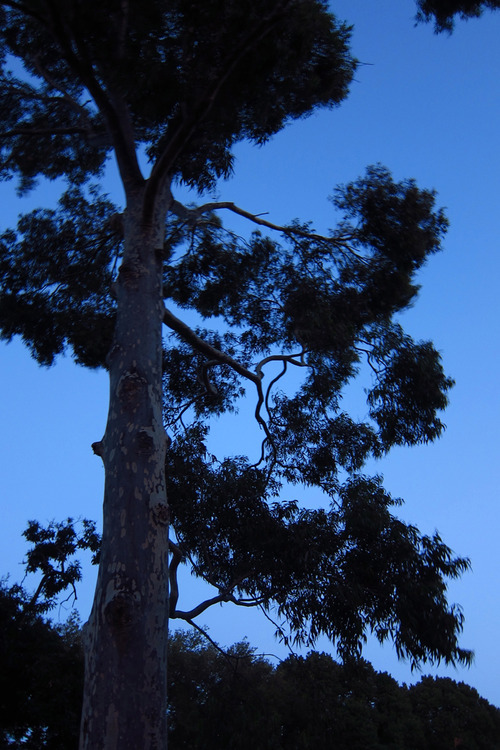
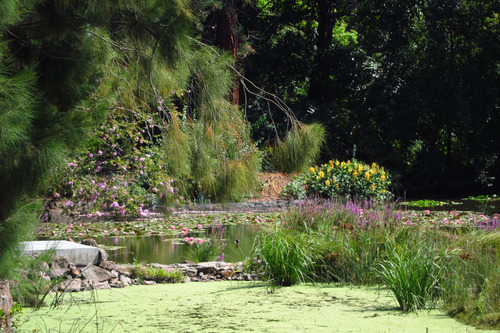
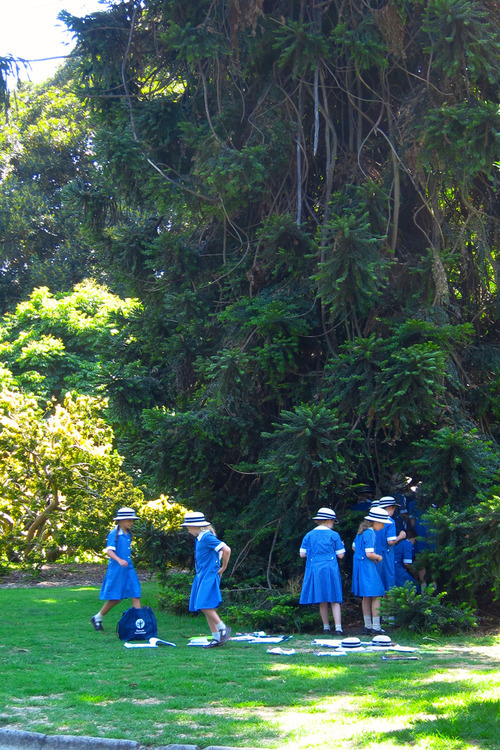
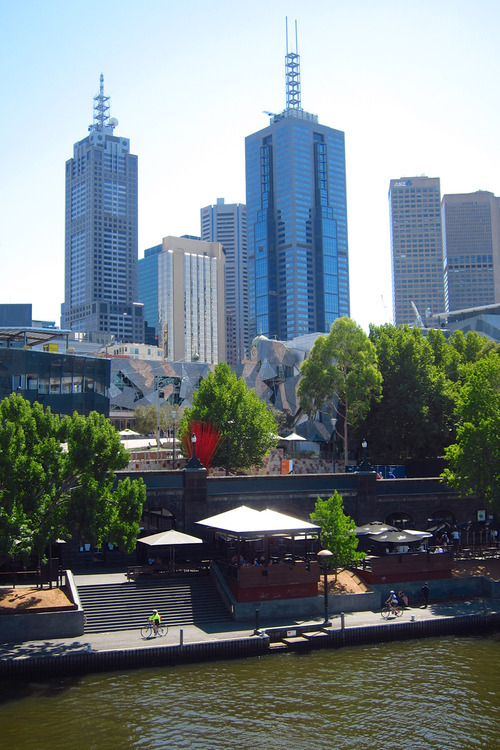

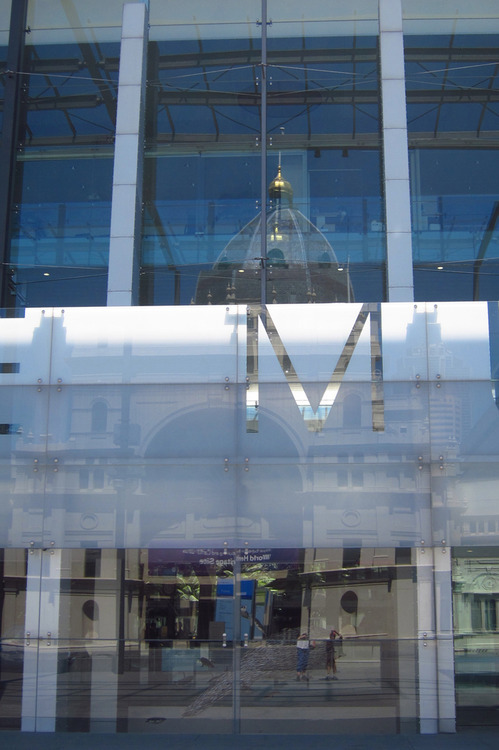
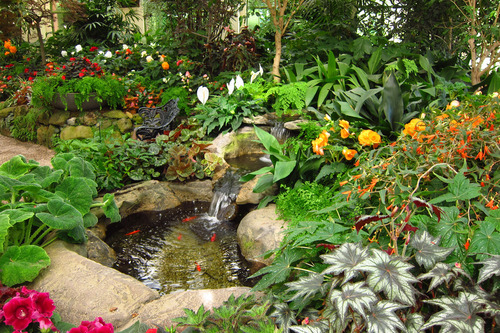
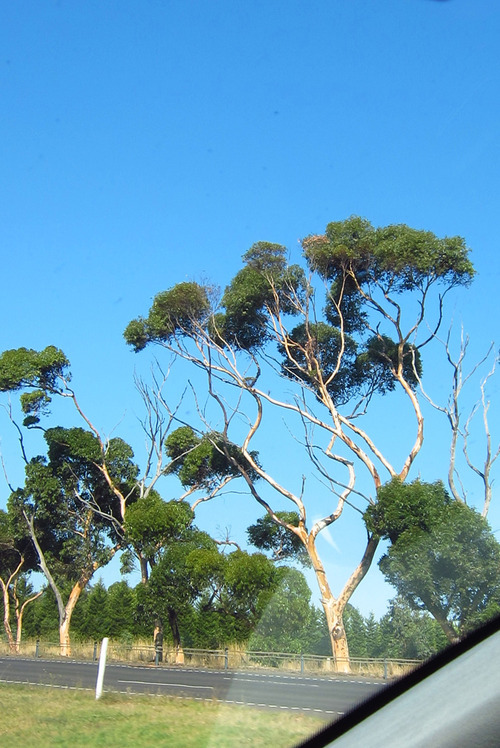
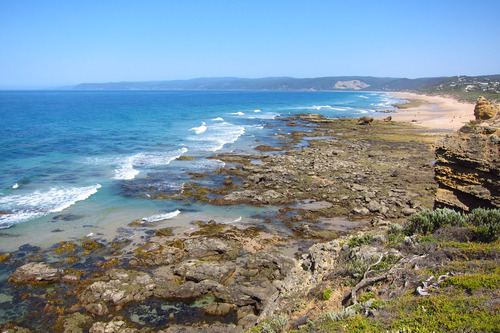
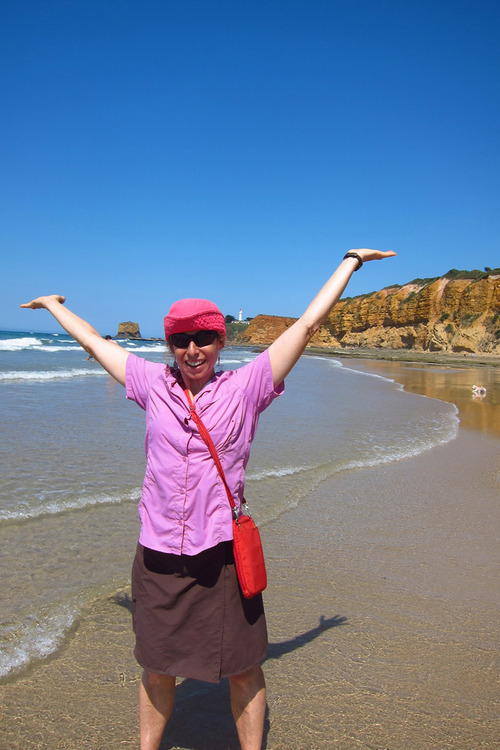
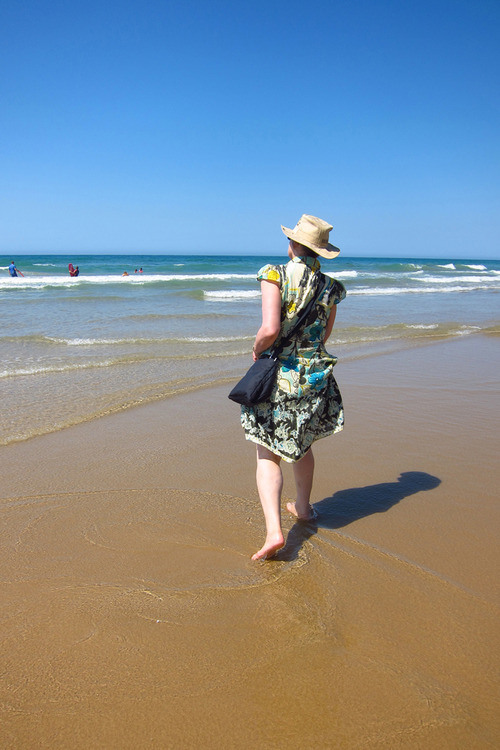
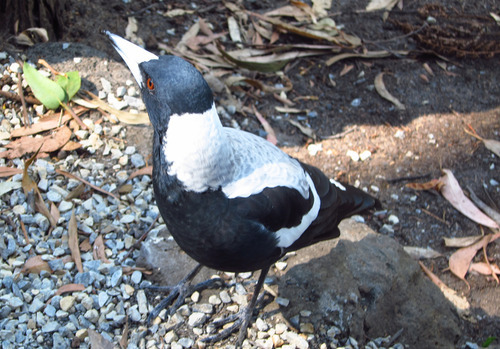
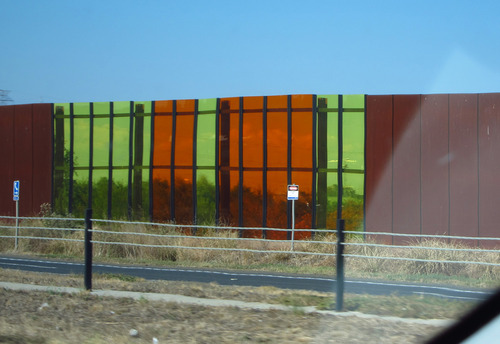
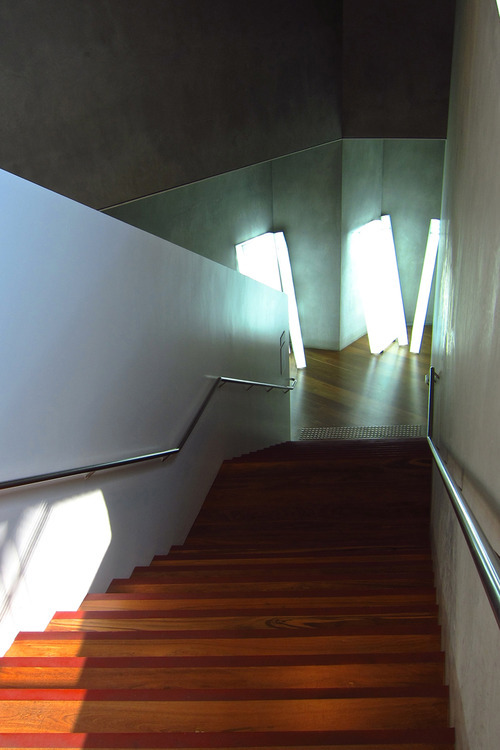
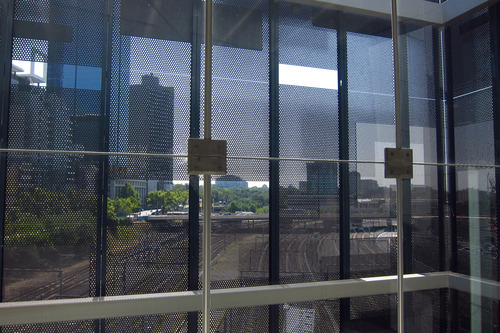
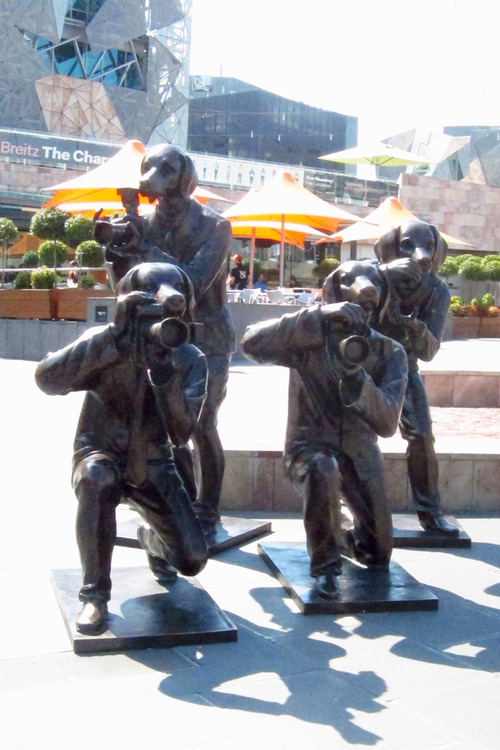


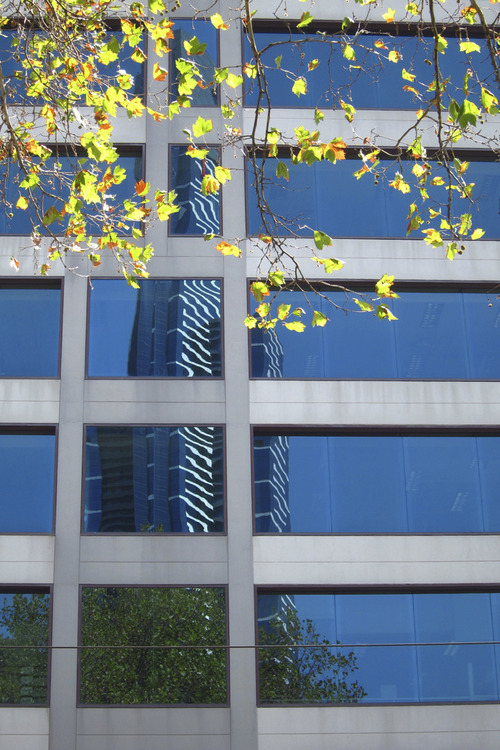
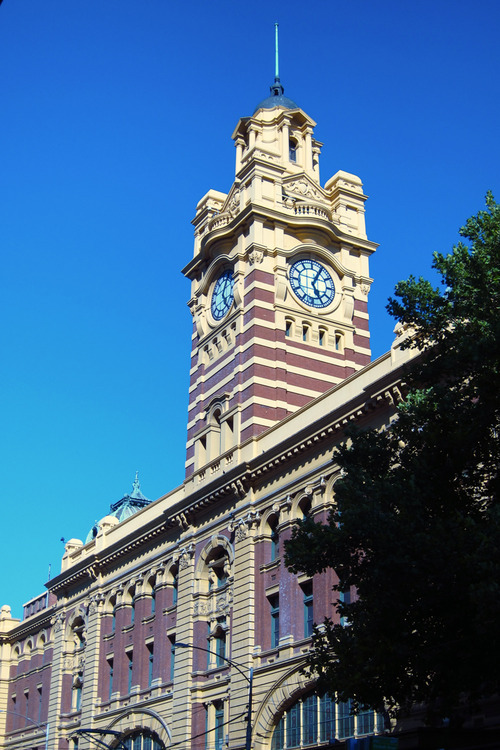
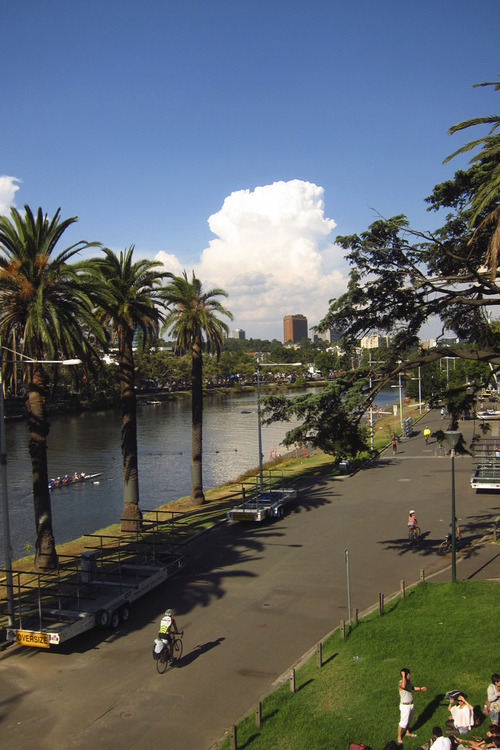
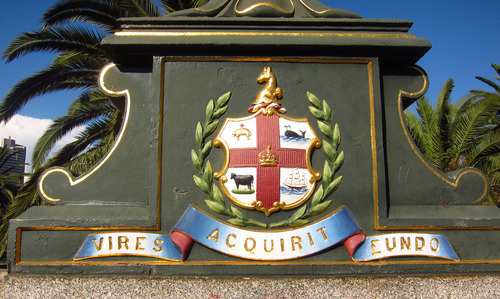
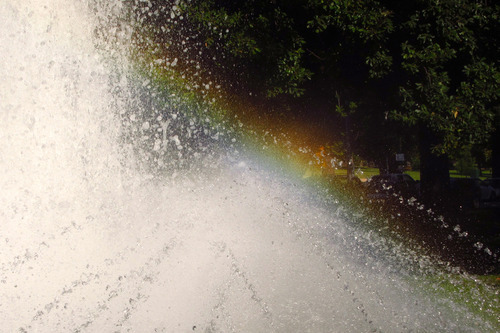
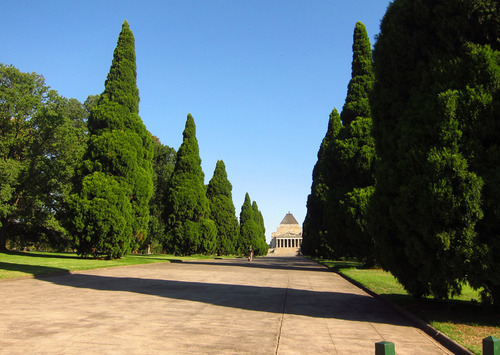

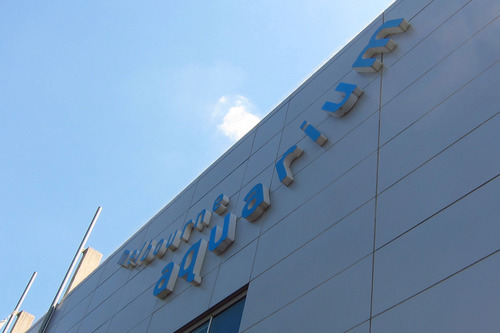
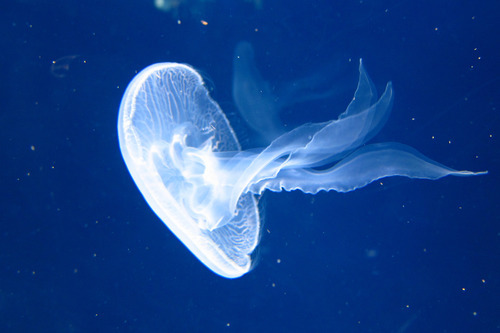

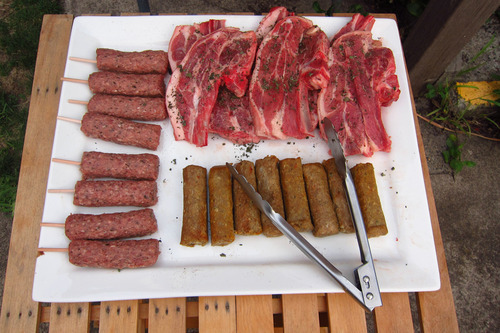
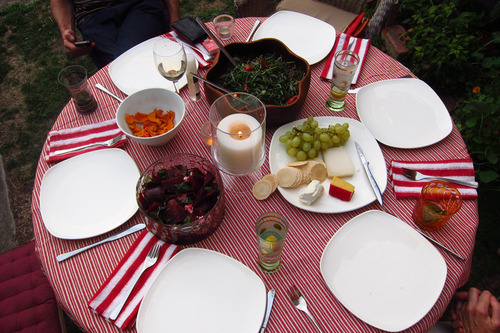
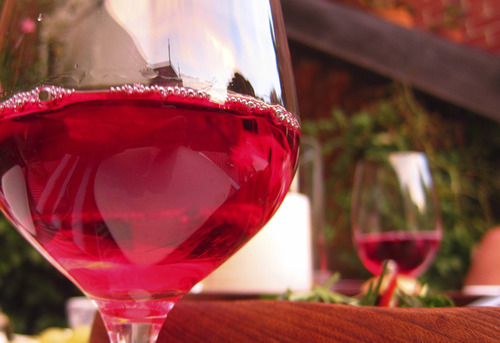
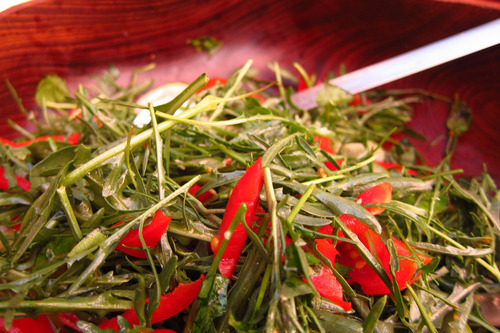
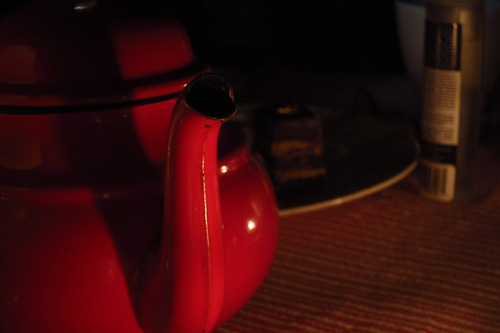
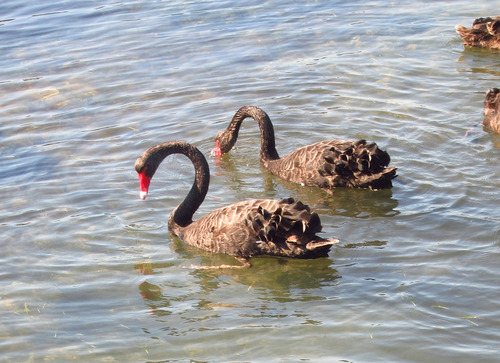
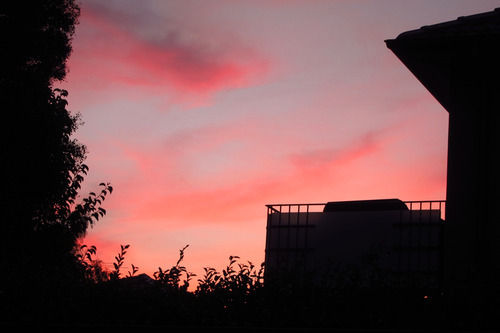
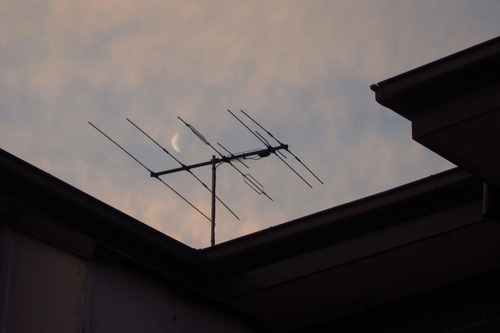
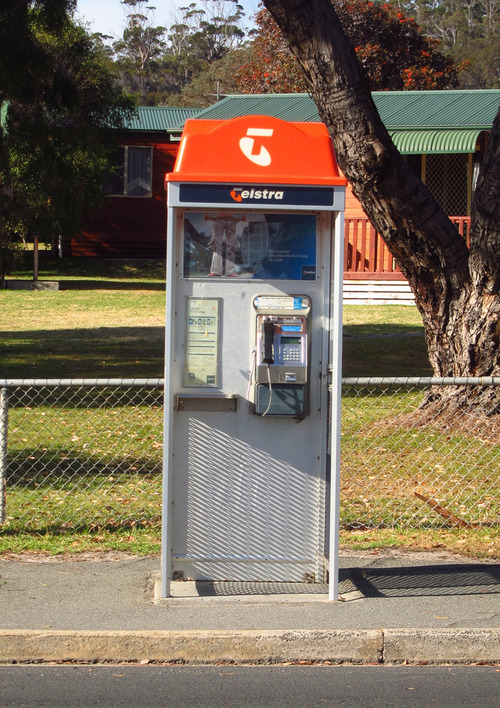 A necessity in many parts of Tasmania.
A necessity in many parts of Tasmania.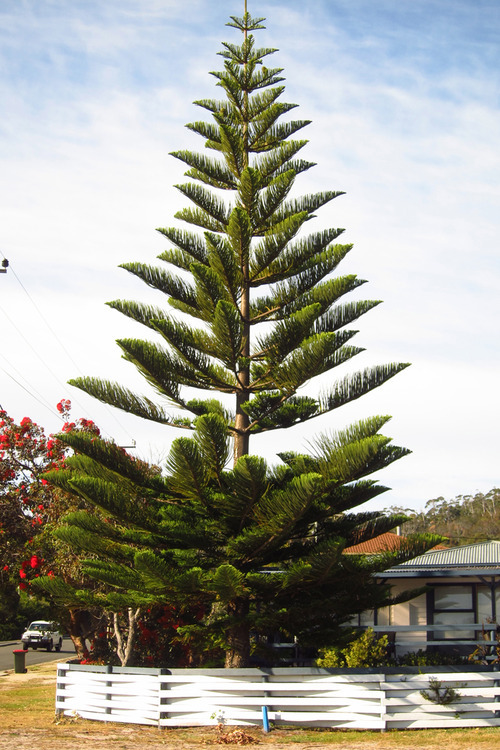 The species on which our camoflaged cell phone towers must be based. Many are far less luxuriant than this speciment. Norfolk Pines (Araucaria heterophylla) are indiginous. Who knew?
The species on which our camoflaged cell phone towers must be based. Many are far less luxuriant than this speciment. Norfolk Pines (Araucaria heterophylla) are indiginous. Who knew?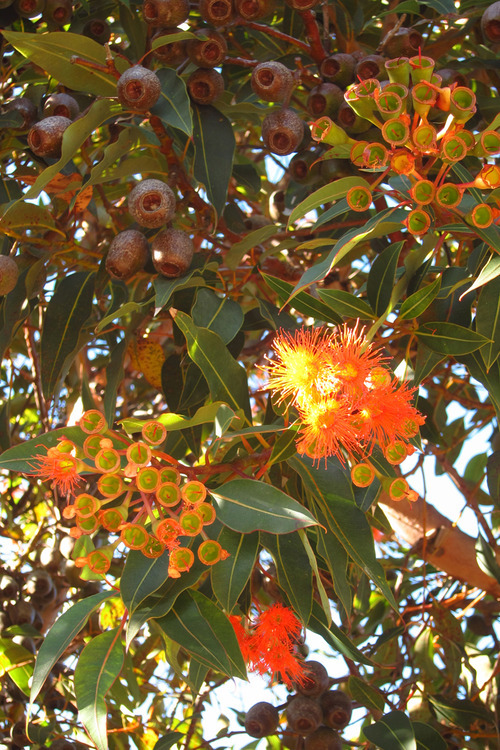 Hold for plant unit: flowers, fruiting, and spent fruits. Eucalyptus species of some description.
Hold for plant unit: flowers, fruiting, and spent fruits. Eucalyptus species of some description.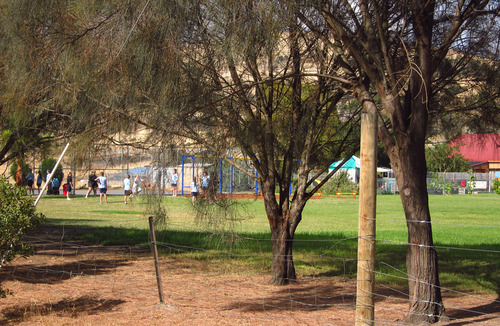 Summer holiday is over and kids are back in school. Looks like early morning recess, or phys ed class. Same sounds as at home. Happiness!
Summer holiday is over and kids are back in school. Looks like early morning recess, or phys ed class. Same sounds as at home. Happiness!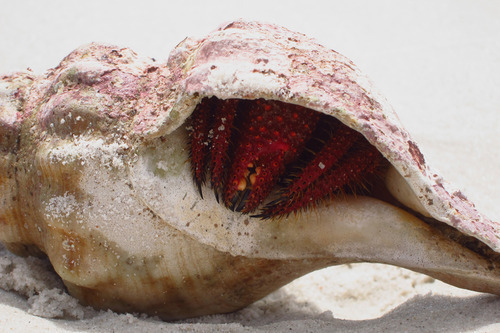 Very large hermit crab along the beach at the Bay of Fires.
Very large hermit crab along the beach at the Bay of Fires.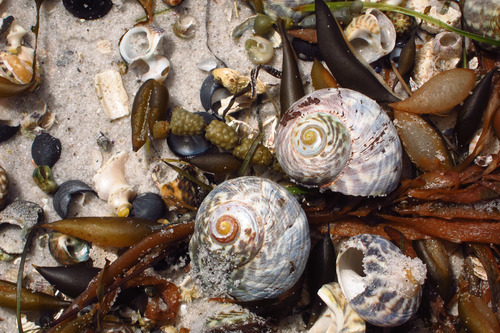 More mollusks.
More mollusks.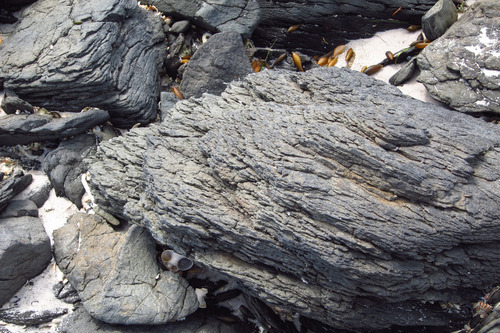 Non-granitic rocks. Basalt? Anyone? Found this crinkly layered specimen along one beach of black boulders at the Bay of Fires.
Non-granitic rocks. Basalt? Anyone? Found this crinkly layered specimen along one beach of black boulders at the Bay of Fires.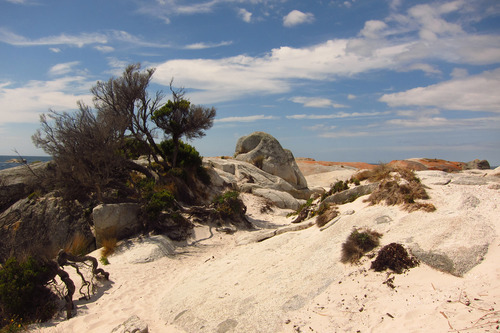 Lots more sand-blown dunes up here (Bay of Fires) than down in Bicheno, though the fine sand looks and feels similar. More gorgeousness!
Lots more sand-blown dunes up here (Bay of Fires) than down in Bicheno, though the fine sand looks and feels similar. More gorgeousness!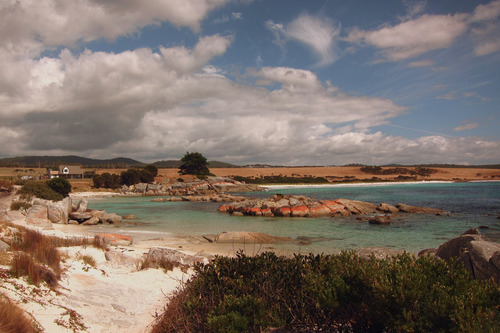 Oh dear. Overcast. Still rather attractive though, don’t you think?
Oh dear. Overcast. Still rather attractive though, don’t you think?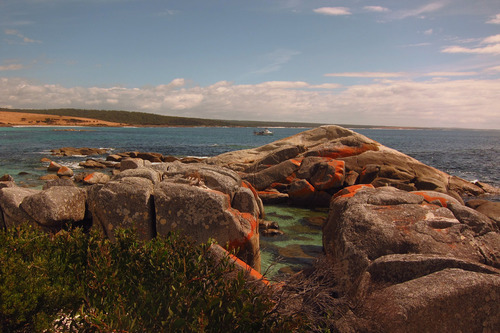 More of the same. As Alena would say, “good life!”
More of the same. As Alena would say, “good life!”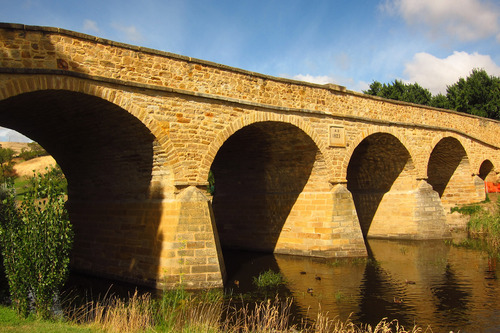 Richmond Bridge 1825 - oldest known stone arch bridge in Australia. You guessed it - built by convicts.
Richmond Bridge 1825 - oldest known stone arch bridge in Australia. You guessed it - built by convicts.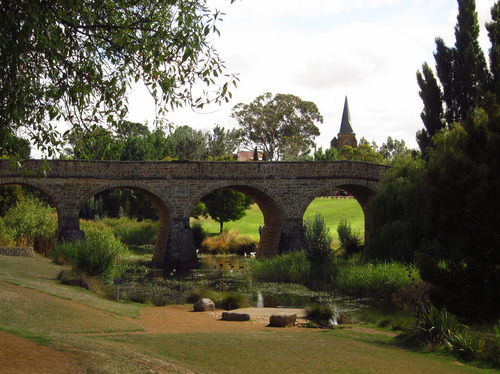 Vantage from across the Coal River, so called because (crappy) coal was collected along its banks, and eventually mined a bit in the region until it was determined to be of too poor quality to be of any industrial use.
Vantage from across the Coal River, so called because (crappy) coal was collected along its banks, and eventually mined a bit in the region until it was determined to be of too poor quality to be of any industrial use.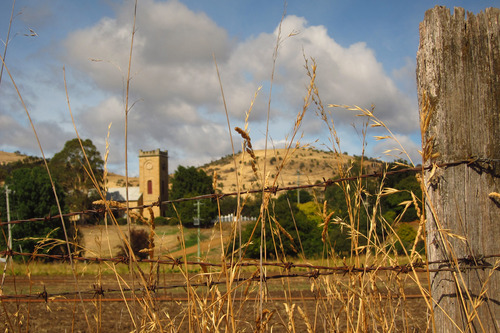 A view along the lane in Richmond, the most touristy but also beautiful of the towns I visited along the Heritage Highway. Overnight at Mrs. Currie’s B&B - charming, good breakfast, and all of the aforementioned legit and poached internet connection.
A view along the lane in Richmond, the most touristy but also beautiful of the towns I visited along the Heritage Highway. Overnight at Mrs. Currie’s B&B - charming, good breakfast, and all of the aforementioned legit and poached internet connection.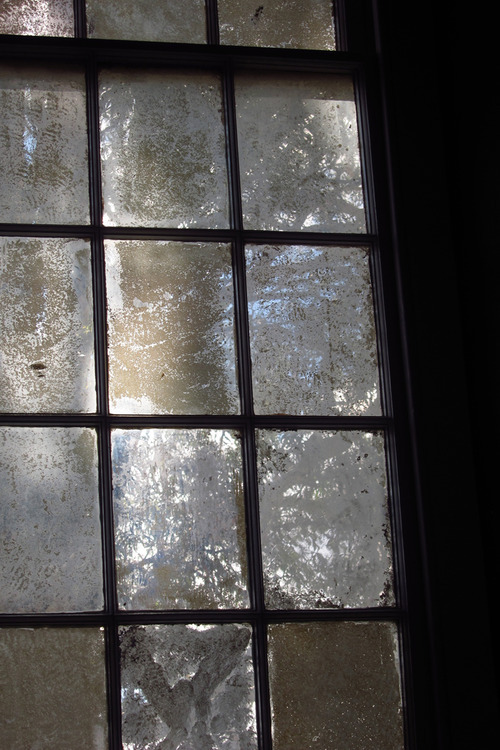 Yes, I know, typical Anndy photo. Looking out through the window of the Episcopal Church in Richmond. Not as grand as the old Catholic House of Worship, but also devoid of graphic paintings of the Stations of the Cross.
Yes, I know, typical Anndy photo. Looking out through the window of the Episcopal Church in Richmond. Not as grand as the old Catholic House of Worship, but also devoid of graphic paintings of the Stations of the Cross.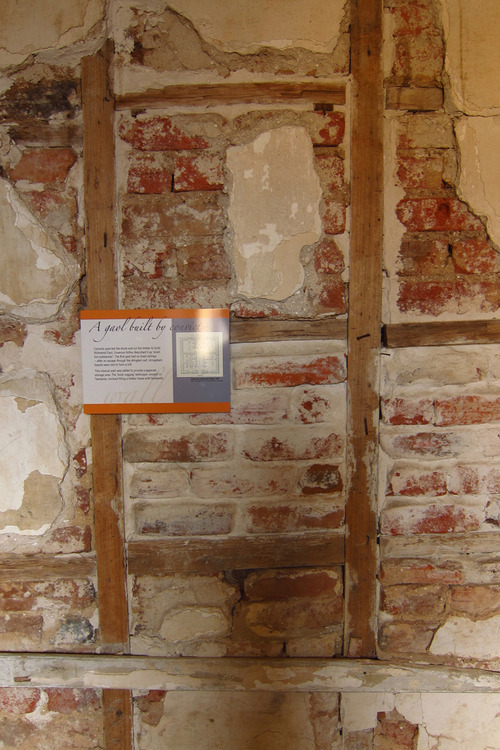 The Gaol (jail) in Richmond is quite well done up as a musuem (of incarceration) and one wall was left to show the unusual masonry. This one’s for you, Todd!
The Gaol (jail) in Richmond is quite well done up as a musuem (of incarceration) and one wall was left to show the unusual masonry. This one’s for you, Todd!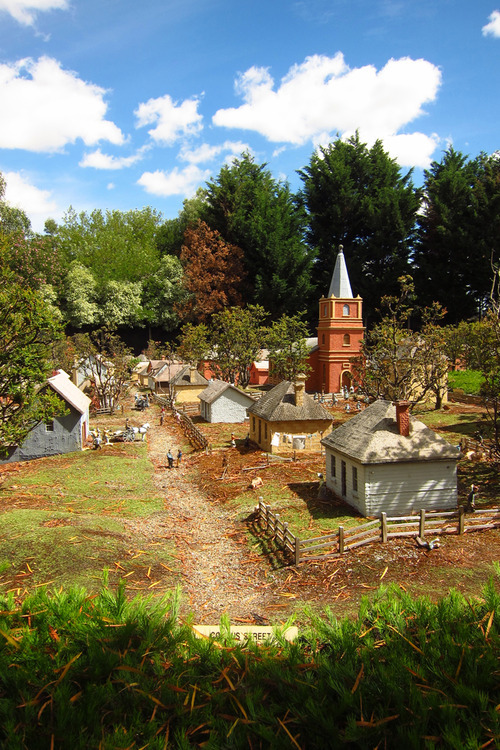 Miniature Hobart of 1869. Some guy’s 9-year project to reconstruct all of the buildings plus 900 little people engaged in all manner of activites. (Yes, ALL manner.) Signage included photographs of views of Modern Hobart taken at the locations that the various miniatures depicted. I thought it was charming.!
Miniature Hobart of 1869. Some guy’s 9-year project to reconstruct all of the buildings plus 900 little people engaged in all manner of activites. (Yes, ALL manner.) Signage included photographs of views of Modern Hobart taken at the locations that the various miniatures depicted. I thought it was charming.!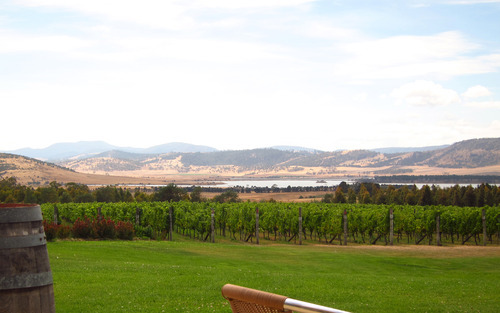 Vinyard where I treated myself to lunch. Off across the fields to the right is an enormous radiotelescope and the Grote Reber Museum, the existence of which I only learned from my waitress, and too late to schedule a visit before my flight to Melbourne. Thought of the Pauls, Martenis and Rosen.
Vinyard where I treated myself to lunch. Off across the fields to the right is an enormous radiotelescope and the Grote Reber Museum, the existence of which I only learned from my waitress, and too late to schedule a visit before my flight to Melbourne. Thought of the Pauls, Martenis and Rosen.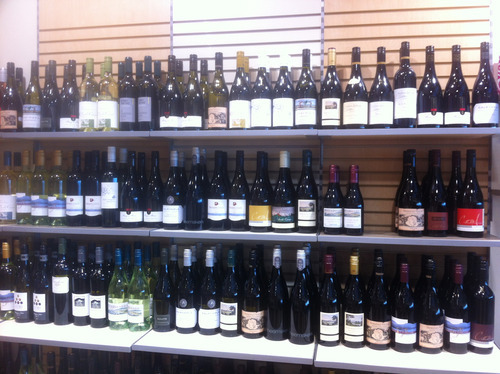 Not like American airports! Kept my clothes on, kept liquids (including a bottle of water) packed where they belong, no radiation scans, short lines, nice security folks, and no jetways. Also no photgraphs of the planes or walkways to the plane, but I’ll allow them that.
Not like American airports! Kept my clothes on, kept liquids (including a bottle of water) packed where they belong, no radiation scans, short lines, nice security folks, and no jetways. Also no photgraphs of the planes or walkways to the plane, but I’ll allow them that.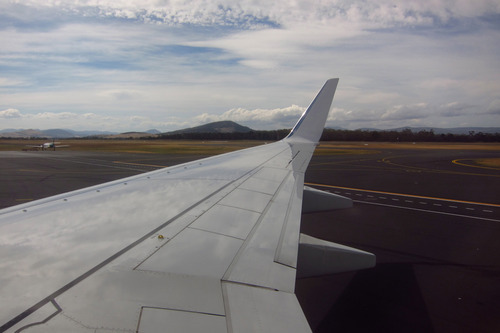
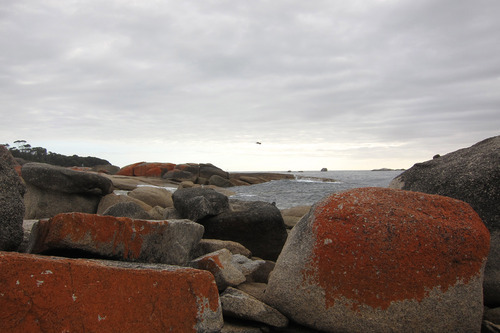
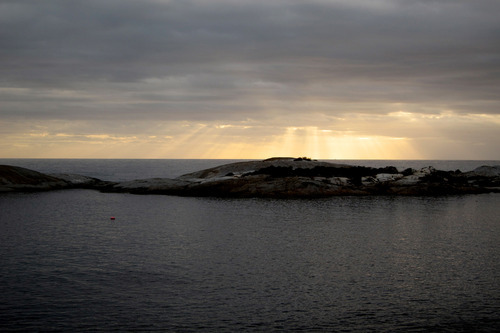
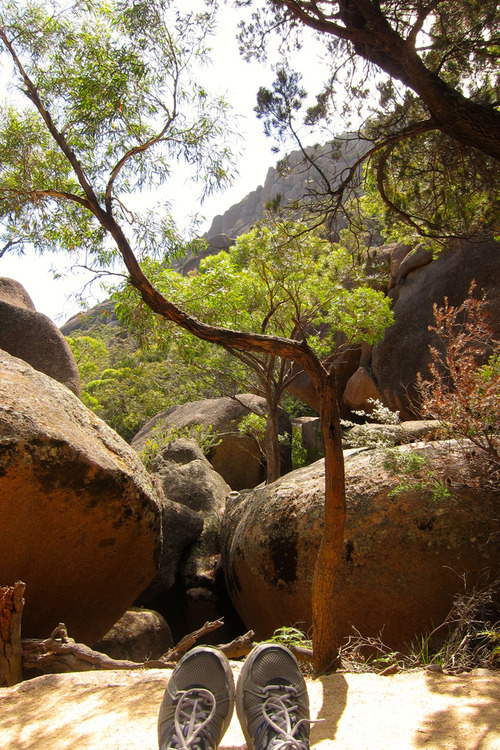 There were lots of enormous, precarious looking boulders perched on outcrops over the trail, and fascinating erosion patterns looked like enormous finger holes in a bowling ball. Others made caves.
There were lots of enormous, precarious looking boulders perched on outcrops over the trail, and fascinating erosion patterns looked like enormous finger holes in a bowling ball. Others made caves.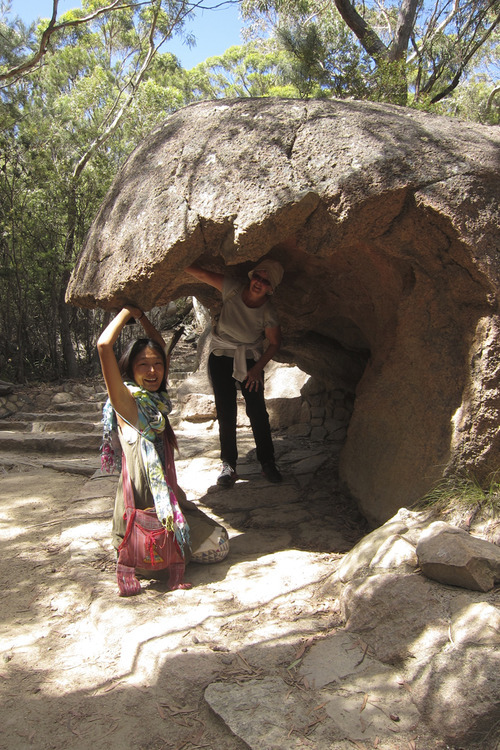
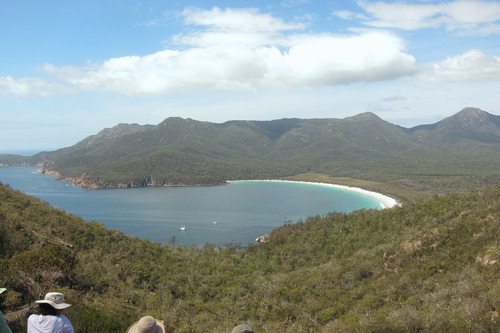
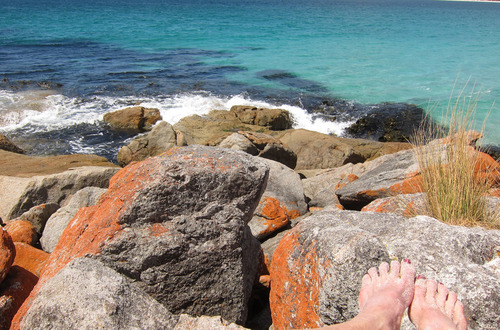

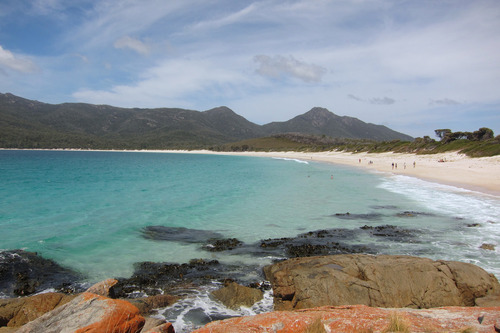
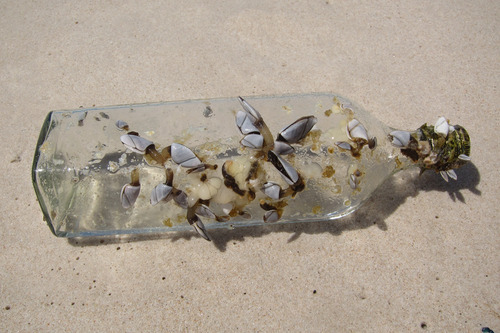
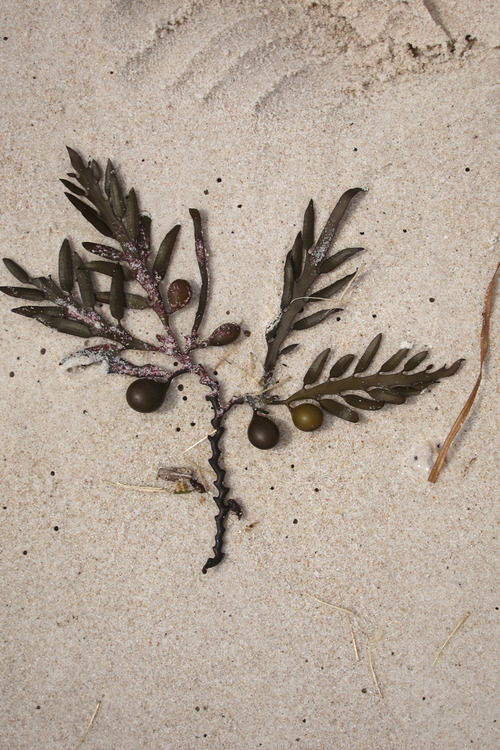
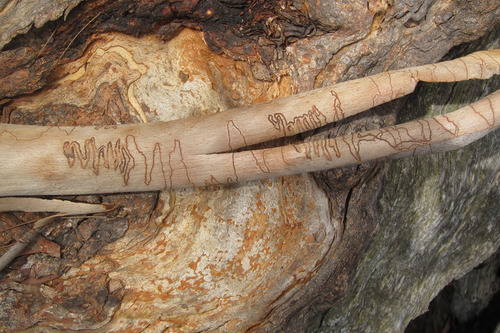
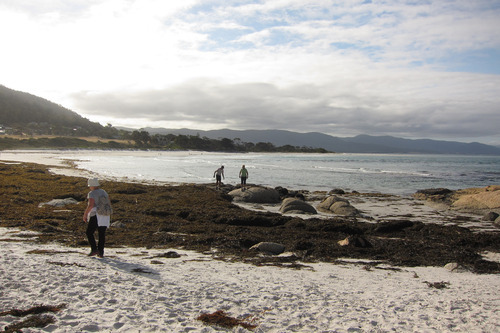
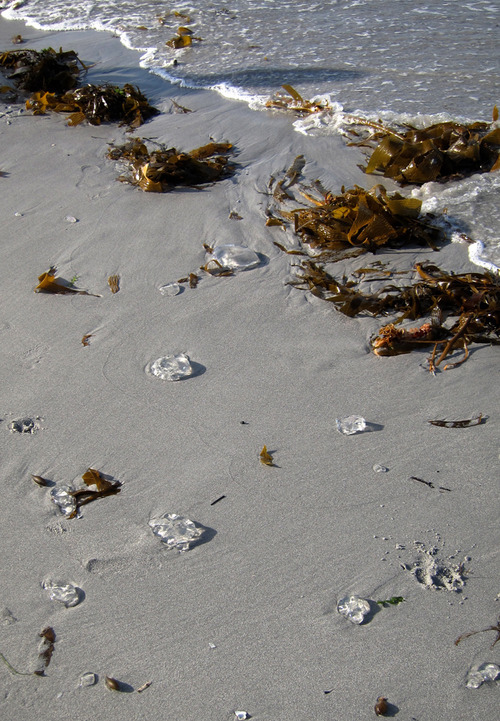
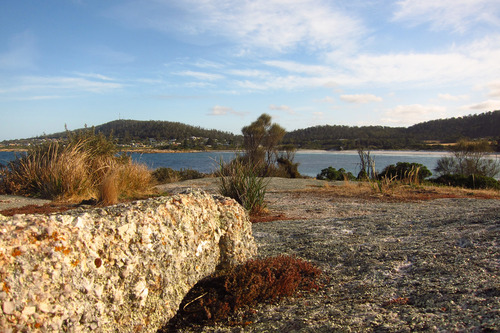
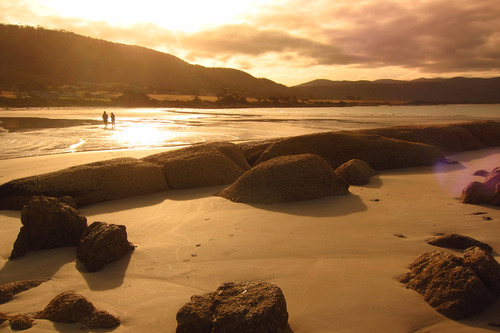
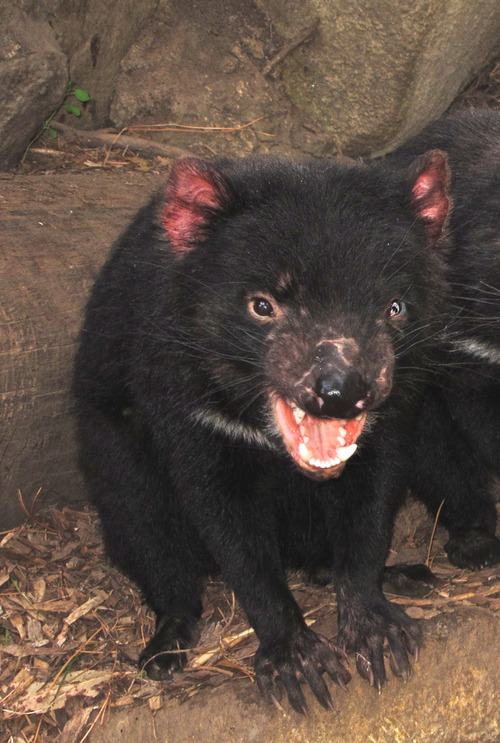
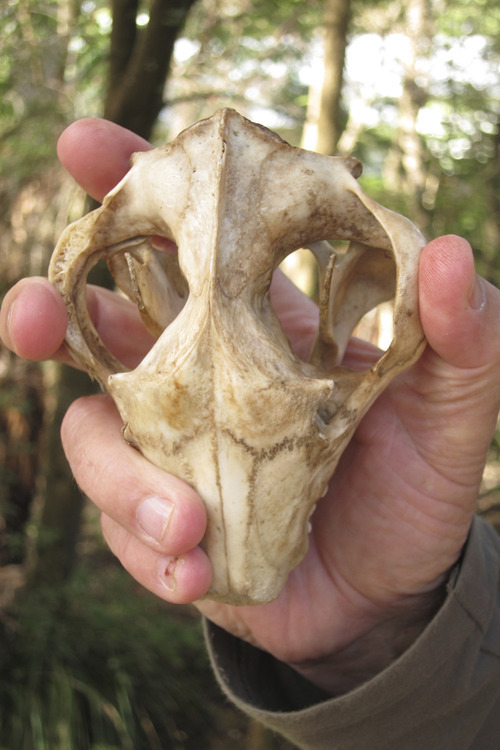
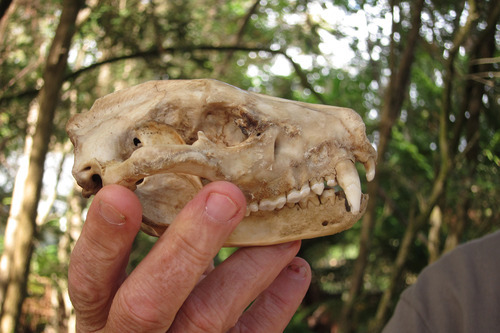
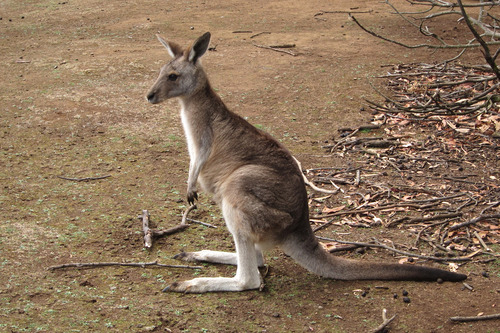
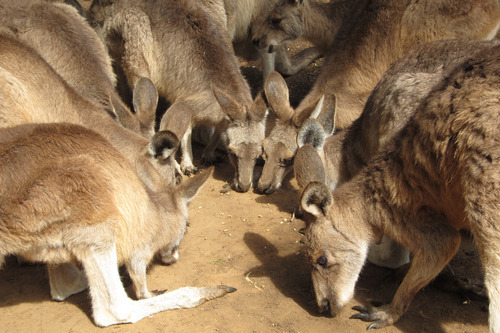
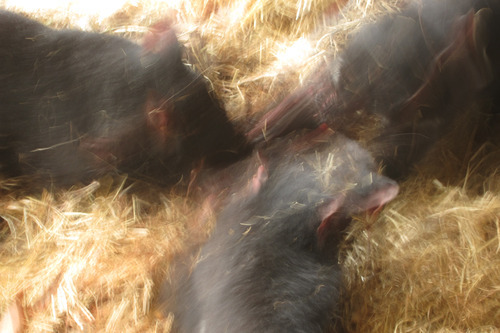
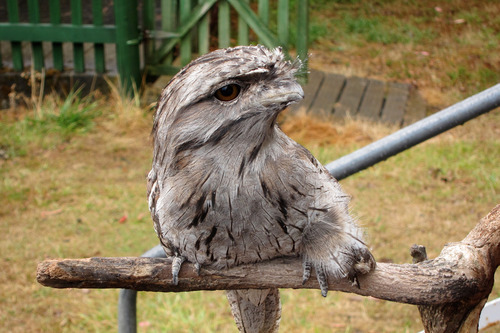
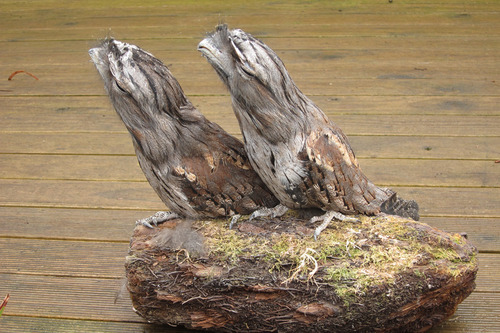
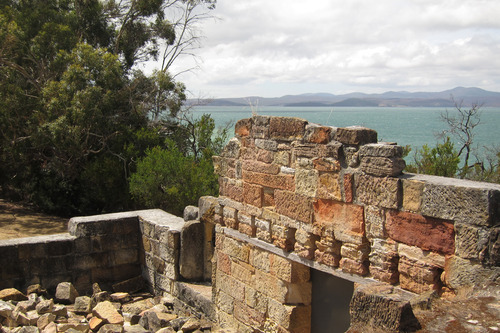
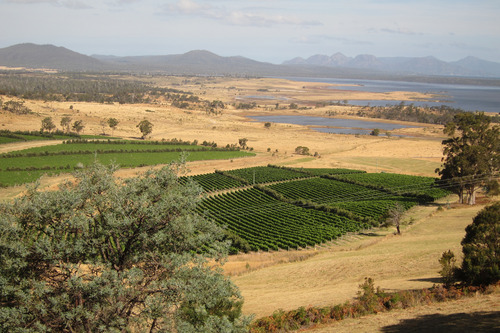
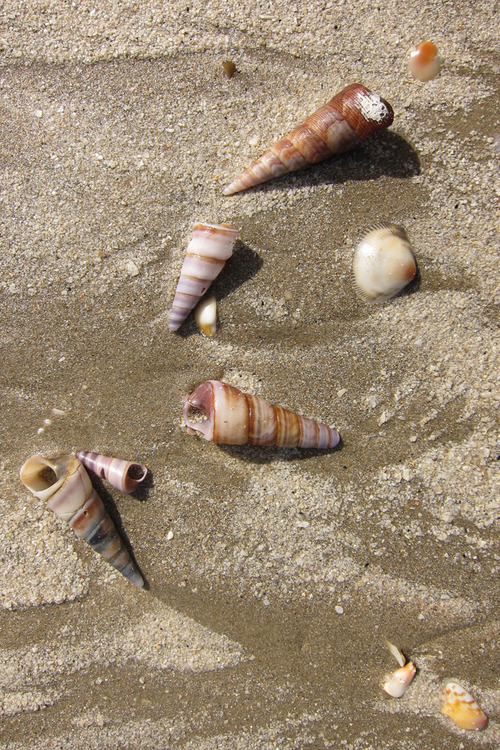
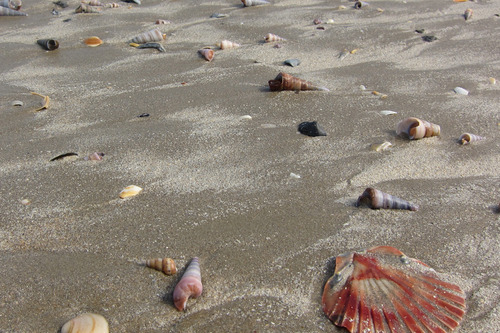
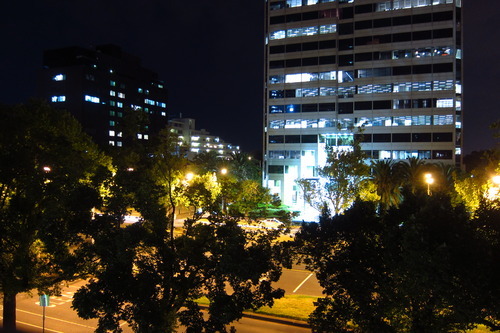
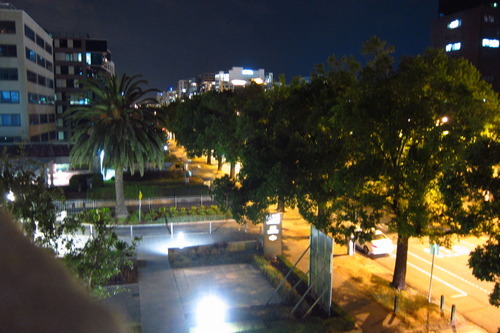

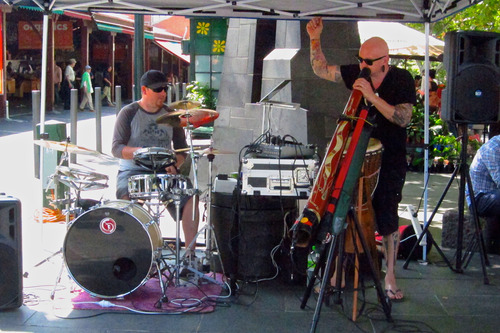 From the market my hostess and I wandered some of the laneways, Melbourne’s iconic pedestrian-only streets and arcades with all sorts of cafes and shops and locals and tourists. Shu-Yee would be disappointed that I didn’t buy a single thing, though we did stop and have a scrumptious iced mocha at a chocolate shop. The beverage had ice cream, cream, real chocolate syrup, real chocolate shavings, and some coffee in there somewhere to provide some liquidity. What a treat! That activity was fairly emblematic of a day spend repaying the calorie debt I imagine (I have a great imagination) I incurred while I was subsisting on apples, yogurt, and cheese sandwiches for a few days in Tasmania.
From the market my hostess and I wandered some of the laneways, Melbourne’s iconic pedestrian-only streets and arcades with all sorts of cafes and shops and locals and tourists. Shu-Yee would be disappointed that I didn’t buy a single thing, though we did stop and have a scrumptious iced mocha at a chocolate shop. The beverage had ice cream, cream, real chocolate syrup, real chocolate shavings, and some coffee in there somewhere to provide some liquidity. What a treat! That activity was fairly emblematic of a day spend repaying the calorie debt I imagine (I have a great imagination) I incurred while I was subsisting on apples, yogurt, and cheese sandwiches for a few days in Tasmania. 
